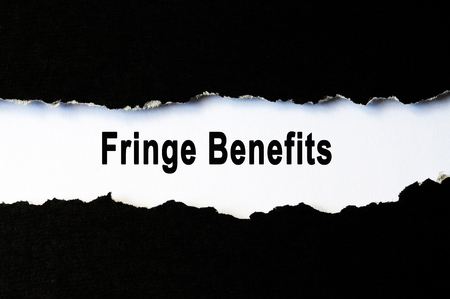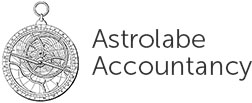The Better Alternative To Fringe Benefits Tax
 Why Pay Fringe Benefits Tax If You Don’t Have To?
Why Pay Fringe Benefits Tax If You Don’t Have To?
An Overview of Fringe Benefits Tax
Fringe Benefits Tax (or “FBT”) is designed to catch all possible non-cash benefits provided to employees. Some benefits are caught but then specifically exempted, such as superannuation contributions, minor benefits under $300 and benefits for which the employee could otherwise claim a tax-deduction. Non-exempt fringe benefits are valued according to the detailed rules in the Fringe Benefits Tax Act.
Once valued, the Fringe Benefits Tax is calculated in some surprising ways:
- Firstly, the tax is payable by the employer, not the employee receiving the benefit.
- Secondly, the tax is levied at the top marginal tax rate of 46.5%, even though this is much higher that the tax rate payable by most employees.
- Thirdly, the tax is not calculated on the taxable value of the benefit, but on a “grossed up” amount that is the taxable value multiplied by 2.0647 (or 1.8692 if the benefit is GST-free). This means that the FBT payable is equal to 96% of the taxable value of most benefits!
On the other hand, the cost of providing fringe benefits is tax-deductible and so is the FBT itself. Input Tax Credits can be claimed for fringe benefit costs that include GST.
Whilst FBT is not payable by the employee, the grossed up value of fringe benefits over $2,000 must be reported in the employee’s tax return and are taken into account in calculating means-tested levies, tax offsets and government benefits.
And in case this was all too straightforward, the FBT year runs from 1 April to 31 March, so it does not coincide with the income tax year. If FBT is payable a return must be lodged and the tax paid by 21 May, giving just 51 days to prepare, lodge and pay the tax.
By now you should be able to see that Fringe Benefits Tax is ridiculously complicated, even without going into how to calculate the taxable value of benefits! It was clearly designed by accountants, for accountants. But what is the alternative?
Employee Contributions
The taxable value of a fringe benefit is reduced by whatever amount the employee pays the employer for the benefit. This contribution must be made from the employee’s after-tax income (so a salary sacrifice arrangement will not meet this requirement). The contribution must be received by the employer before the FBT return is due on 21 May.
Employee contributions are income to the employer, and include GST unless the fringe benefit is GST-free (such as interest or hospital insurance). Employee FBT contributions received are reported separately in the business income tax return.
If the employee contribution is equal to or greater than the taxable value of the benefit there is no taxable benefit. If you can get all of your employees to make contributions equal to the value of the taxable benefits you provide to them, you will not need to lodge an FBT return at all.
Of course, the problem is that if your employees have to pay for the fringe benefits you give them the benefits are not benefits! The solution is to agree with the employee to pay them a bonus to be used to make the contribution. The bonus will need to be large enough so that after withholding PAYG tax the remainder is equal to the required contribution. This can be done by journal entry, but it is often simpler to make out a cheque for the employee’s net bonus and then deposit it back into your business bank account.
For working owners of the business the method is simpler: shareholders and trust beneficiaries can simply charge the amount of their FBT contributions to their loan account in the business to be offset against dividends or trust distributions.
This method costs your business the difference between the gross bonus and the GST-exclusive amount of the employee contribution. The saving is in the lower tax brackets most employees are in: for an employee earning between $80,000 and $180,000 per year the saving is 25% of the Fringe Benefits Tax that would be payable; for an employee earning between $37,000 and $80,000 per year the saving is 33% to 37%. For employees earning less than $37,000 per year the saving is 50% to 90%!
In addition, if all employees pay out their benefits you will not have to lodge Fringe Benefits Tax returns and you will not have to pay quarterly FBT instalments.
A Worked Example
Joe Blow & Co Pty Ltd provides a company car costing $30,000 to employee Frank Frobischer who has an income of $90,000 per year. The taxable value of the car is $6,000 ($30,000 x 20%).
The FBT payable by Joe Blow & Co Pty Ltd would be $5,760 ($6,000 x 2.0647 = $12,388 x 46.5%).
If the company instead paid Frank a bonus so that he could make an employee contribution they would have to pay a gross amount of $9,756, with $3,756 PAYG tax withheld. The net bonus of $6,000 would come back to the company as taxable income of $5,455 and GST Received of 545. The expense to Joe Blow & Co Pty Ltd is $4,301 ($9,756 bonus paid – $5,455 received back, or $3,756 PAYG withheld + $545 GST payable to the ATO on the next BAS).
The saving to Joe Blow & Co Pty Ltd is $1,459 ($5,760 FBT vs $4,301 PAYG and GST) – 25.3% less than Fringe Benefits Tax.
Let Us Help You Save Tax!
At Astrolabe Accountancy we take care of calculating your taxable fringe benefits and ensure that you do not have to pay any more than is absolutely necessary. Every year at this time we send our employer clients a questionnaire to record the fringe benefits provided during the FBT year, then we provide instructions on how to reduce each employee’s taxable benefits to nothing.
